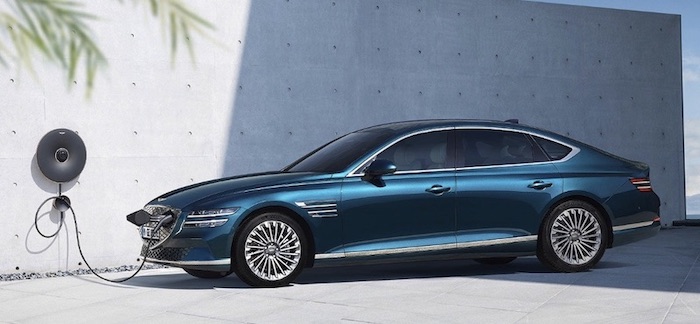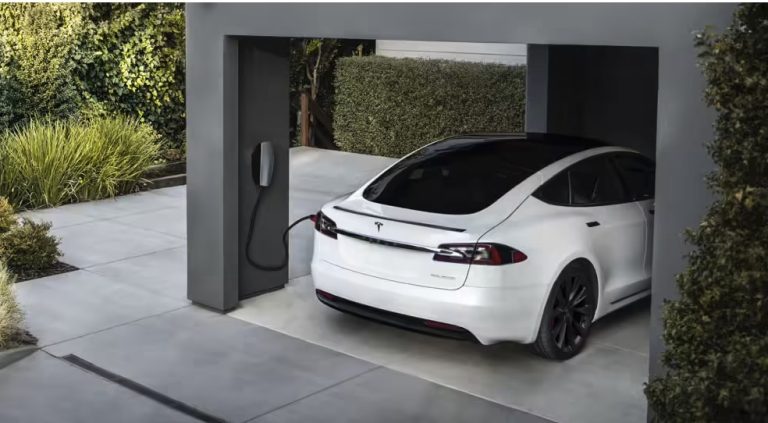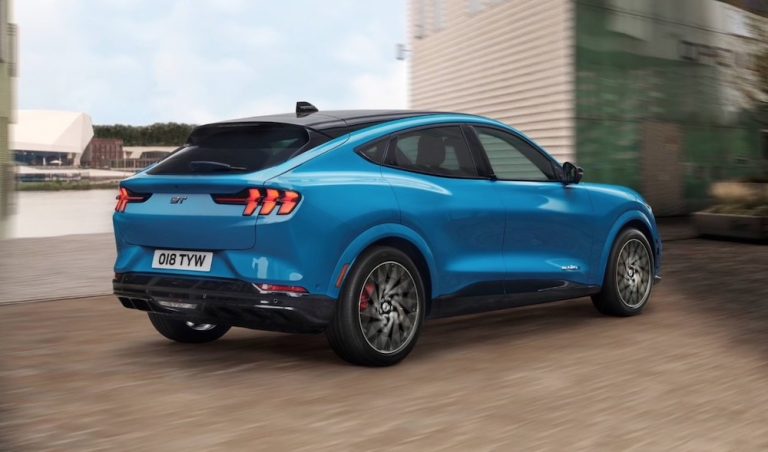Electric Cars: The Basics
For those of you new to zero-emission electric driving, we recommend a read of the following articles:
Sign up to the e-zoomed Electric Living newsletter
The All-Electric Genesis G80 Saloon
Genesis Motor, LLC, though a brand not well known in Ireland, is part of the Hyundai Motor Company, the behemoth South Korean automotive manufacturer. The Genesis brand became an independent luxury marque in 2015. Genesis has currently on offer a number of conventional internal combustion engine (ICE) vehicles and electric vehicles (EVs). However, the company has announced its intention to only develop electric vehicles (EVs) from 2025. Genesis currently has the following EVs on sale:
The all-electric Genesis G80 EV competes in the premium segment of family saloons and executive luxury cars. A segment, where brand ‘cache’ is a key element of the overall ‘proposition’. Unfortunately for Genesis, it does not have the brand awareness of its competitors, like Audi, Mercedes and BMW. Given the premium price tag for the G80 EV, it will have to offer a lot more in design, performance and electric credentials to make a dent in this segment.
However, as the Genesis G80 is not built on a dedicated EV platform, it makes it all the more challenging to deliver a compelling proposition to a discerning electric car buyer. For those new to electric driving, most of the recent pure electric cars (also known as battery-electric vehicles), are developed and built on a dedicated bespoke EV platform.
An example is the all-electric Genesis GV60 built on the E-GMP, an EV dedicated platform. Electric vehicles (EVs) developed on an internal combustion engine (ICE) platform, will have inherent compromises. Some of these include, cabin design and space, boot space, exterior styling and also overall lower efficiency of the EV. The G80 EV is not an exception to this rule.
In terms of its electric credentials, the G80 electric saloon does incorporate a decent size EV battery: 87.2 kWh. The EV has a claimed emission-free electric range up to 520 km on a full charge. Even adjusting for real-world driving conditions, the electric car should be able to deliver up to 440 km. More than sufficient for most day-to-day needs, to include, city and motorway driving. The G80 EV also incorporates a heat pump, which further improves the efficiency of the electric vehicle (EV).
For those new to electric driving, it is worth noting the fantastic electric range of the latest-generation of electric cars. In fact, in our list of the longest range electric cars for 2023, the all-electric Mercedes-Benz EQS saloon tops the list with a WLTP range up to 730 km.
The G80 electric offers DC charging capability up to 350 kW DC. The EV can be charged from 10% to 80% in 22 minutes using a 350 kW DC charger. At the more commonly found 50 kW DC charger, the G80 can be charged up to 80% in 73 minutes.
Of course, for most electric car owners, the EV is usually charged overnight, at home. The G80 EV incorporates a 11 kW (3-phase) AC onboard charger as standard. Charging the e-saloon up to 100% via a dedicated three-phase EV charger, like myenergi zappi will take up to 7 hours and 33 minutes. However, as most homes in Ireland are restricted to single-phase power supply, the EV will take longer to charge.
We at e-zoomed recommend a ‘topping up’ approach to charging an electric car. It is better for the long-term maintenance of the onboard EV battery. Genesis offers a 8 years or 160,000 km warranty. We also recommend combining an on-site PV system and battery storage, to truly leverage the benefits of zero-tailpipe emission electric driving.
The EV has a host of technology and features on offer (some as standard and others as options). As an example, the EV offers vehicle-to-load (V2L), but only as an option. Using the onboard bidirectional charger, V2L can be used to charge certain electric appliances, like a laptop, smartphone etc. It can also be used to charge another EV. The G80 V2L is up to 3.7 kW. The V2L can only be used if the onboard EV battery has a charge over 20%. V2L can be used via the external V2L capability or via the internal V2L plug.
Safety features include: blind-spot collision-avoidance, blind-spot view monitor, forward collision-avoidance assist, lane following assist, lane keeping assist, intelligent front lighting system and more. There is also the option of a solar roof to extend the EV range. According to the company, the solar roof can add another 700 electric miles a year, or put another way, approximated 2 miles a day. The solar roof contributes over 266 kWh of electric energy a year. The solar roof is 204 W.
In terms of practicality, the EV offers ample headroom and legroom for passengers. The EV has a 530 L boot and a 25 L frunk. The frunk is best used for storing the EV cable. The charging port is located at the front of the car, so convenient.
In terms of performance, the all-wheel drive (AWD) G80 EV can deliver 0-100 km/h in 4.9 seconds (using the boost function). The boost mode delivers 10 seconds of maximum power and acceleration (370 PS (272 KW)). The top speed is 235 km/h. A good performance, given the additional weight of the onboard EV battery (482.3 kg).
The EV incorporates ‘smart regenerative braking 2.0′, which automatically adjusts the regen profile based on the based on driving behaviour, navigation information and traffic conditions. The EV incorporates one-pedal driving, which the manufacturer refer to as ‘i-Pedal’.
Genesis is keen to emphasise its ‘customer centric’ approach to buying and owning an electric car. The company offers a Personal Assistant ‘to support you throughout your purchase and ownership journey. From arranging a test drive at your home; supporting as you select or configure your new car; and helping arrange servicing, they are always on hand and focused on you’. Moreover, the company also offers a 5 year ‘Care Plan’ which includes: warranty, servicing, breakdown and more.
Bottom-line, electric driving is good for the environment and the wallet!
| PROS | CONS |
|---|---|
| Decent electric range | Expensive. Does not offer an entry-level trim |
| Good level of onboard equipment (standard and options) | Limited brand recognition |
| DC charging up to 350 kW DC/ 11 kW onboard AC charger | Available in only one EV battery size |
The All-Electric Genesis G80 Saloon (credit: Genesis)
| At A Glance | |
|---|---|
| EV Type: | Battery-Electric Vehicle (BEV) |
| Body Type: | Saloon |
| Engine: | Electric |
| Available In Ireland: | No |
| Variants (1 Option) |
|---|
| Genesis G80 EV (from € N/A) |
| EV Battery & Emissions | |
|---|---|
| EV Battery Type: | Lithium-ion |
| EV Battery Capacity: | Available in one battery size: 87.2 kWh |
| Charging: | 350 kW DC rapid charging (10%-80%: 22 mins). Onboard charger 11 kW AC (0%-100% : 7 hrs 33 mins) |
| Charge Port: | Type 2 |
| EV Cable Type: | Type 2 |
| Tailpipe Emissions: | 0g (CO2/km) |
| Battery Warranty: | 8 years or 160,000 km |
| Average Cost Of Residential Charging | |
|---|---|
| Battery net capacity: 16.7 kWh | € 4.00 |
| Battery net capacity: 30.0 kWh | € 7.19 |
| Battery net capacity: 39.2 kWh | € 9.39 |
| Battery net capacity: 45.0 kWh | € 10.78 |
| Battery net capacity: 50.0 kWh | € 11.98 |
| Battery net capacity: 64.0 kWh | € 15.34 |
| Battery net capacity: 71.0 kWh | € 17.01 |
| Battery net capacity: 77.0 kWh | € 18.45 |
| Battery net capacity: 90.0 kWh | € 21.57 |
| Battery net capacity: 100.0 kWh | € 23.97 |
- Note 1: The average cost of residential electricity in Ireland varies depending on the region, supplier and type of energy used. An average for Ireland is 23.97 cents/kWh.
- Note 2: Not all EV manufactures make available the data on net EV battery capacity, and in a number of instances the EV battery capacity advertised, does not state if it is gross or net capacity. In general, usable EV battery capacity is between 85% to 95% of the gross available capacity.
| Charging Times (Overview) | |
|---|---|
| Slow charging AC (3 kW – 3.6 kW): | 6 – 12 hours (dependent on size of EV battery & SOC) |
| Fast charging AC (7 kW – 22 kW): | 3 – 8 hours (dependent on size of EV battery & SoC) |
| Rapid charging AC (43 kW): | 0-80%: 20 mins to 60 mins (dependent on size of EV battery & SoC) |
| Rapid charging DC (50 kW+): | 0-80%: 20 mins to 60 mins (dependent on size of EV battery & SoC) |
| Ultra rapid charging DC (150 kW+): | 0-80% : 20 mins to 40 mins (dependent on size of EV battery & SoC) |
| Tesla Supercharger (120 kW – 250 kW): | 0-80%: up to 25 mins (dependent on size of EV battery & SoC) |
- Note 1: SoC: state of charge
| Dimensions | |
|---|---|
| Height (mm): | 1630 |
| Width (mm): | 1995 |
| Length (mm): | 4715 |
| Wheelbase (mm): | 2875 |
| Turning Circle (m): | 11.5 |
| Boot Space (L): | 530 |
| G80 EV | |
|---|---|
| EV Battery Capacity: | 87.2 kWh |
| Pure Electric Range (WLTP): | 520 km |
| Electric Energy Consumption (kWh/100km): | 19.1 |
| Charging: | 350 kW DC rapid charging (10%-80%: 22 mins). Onboard charger 11 kW AC (0%-100% : 7 hrs 33 mins) |
| Top Speed: | 235 km/h |
| 0-100 km/h: | 4.9 seconds (with Boost) |
| Drive: | All-wheel drive (AWD) |
| Max Power (PS): | 370 (272 kW) |
| Torque (Nm): | 700 |
| Transmission: | Automatic |
| Seats: | 5 |
| Doors: | 4 |
| Kerb Weight (kg): | N/A |
| Colours: | 13 |
| NCAP Safety Rating: | N/A |
Electric Vehicles (EVs): Jargons
There is no doubt, in that, for those new to electric driving, the terminology can be both daunting and confusing. We have chosen a few jargons to help you get more familiar with electric vehicles (EVs)! We also recommend reading our article ‘Electric Car Jargon Buster‘ for a more comprehensive list of terms.
| Glossary: Electric Vehicles (EVs) | |
|---|---|
| Battery-Electric Vehicle (BEV): | What is a BEV? A battery-electric vehicle (BEV) is more commonly referred to as a pure electric car. A BEV is ‘pure’, in that, the vehicle only uses electric power for propulsion i.e. a BEV does not have an internal combustion engine (ICE). It is easy to recognise these zero-tailpipe emission green cars, as these vehicles are silent (except for the artificial noise), and do not have a tailpipe! |
| Frunk: | What is a frunk? Though a frunk is not a new term, its availability is becoming more widespread with the development of electric vehicles (EVs). A frunk is a storage space/ compartment/ trunk in the front of a vehicle, rather than the rear. In the case of pure electric cars, given that these vehicles do not have an onboard internal combustion engine (ICE), there is space for a frunk. It is worth noting that a frunk is usually much smaller than a trunk, and in EVs, a good space for storing the EV cable. |
| Mild Hybrid Electric Vehicles (MHEVs): | What is a MHEV? Mild hybrids use both an internal combustion engine (ICE) and an electric motor. These cars are also known as ‘self-charging hybrids’. The vehicle uses regenerative braking (recuperated electric energy) to improve the fuel efficiency and to reduce tailpipe emissions (CO2 g/km). However, mild hybrids cannot be charged by an external power source, like an EV charger. |
| Plug-In Hybrid Electric Vehicle (PHEV): | What is a PHEV? Like a MHEV, a plug-in hybrid electric vehicle (PHEV) aims to increase the fuel efficiency and reduce tailpipe emissions. However there is much difference between a PHEV and a MHEV. A PHEV has a more powerful electric motor and a larger onboard EV battery. In a PHEV, the electric motor and onboard EV battery are also used to propel the electric vehicle. Moreover, a PHEV battery is charged by using an external power source, like a dedicated EV charger. |
| Regenerative Braking: | What is regenerative braking? Also known as regen braking or brake recuperation, regenerative braking is a process of capturing the wasted energy (during braking) from an electric vehicle, to be reused (recycled). In the case of electric driving, the ‘captured’ energy is reused to increase the pure electric range of the EV. |
While e-zoomed uses reasonable efforts to provide accurate and up-to-date information, some of the information provided is gathered from third parties and has not been independently verified by e-zoomed. While the information from the third party sources is believed to be reliable, no warranty, express or implied, is made by e-zoomed regarding the accuracy, adequacy, completeness, legality, reliability or usefulness of any information. This disclaimer applies to both isolated and aggregate uses of this information.



























